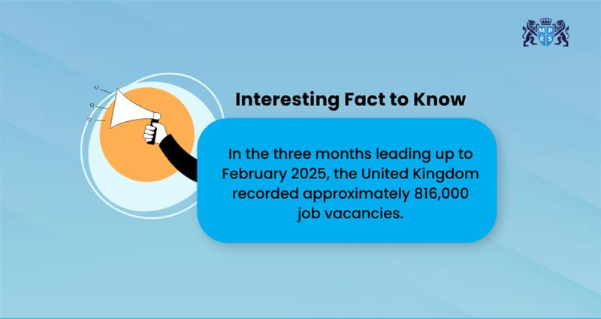Table Of Contents


Ever feel like you're stuck on a career path that no longer excites you? You’re not alone. Many professionals reach a stage where the job title no longer matches their ambition, or the daily grind starts to feel more draining than rewarding. That’s where Navigating Career Transitions comes in. It’s not just a buzzword anymore - it’s become a powerful way to reclaim control and pursue something that truly matters to you.
In this blog, we’ll walk you through a practical and motivating 10-step framework for Navigating Career Transitions with clarity and confidence. Whether you're itching to break into a new industry, seeking better work-life balance, or simply chasing passion over routine, this blog will help you turn uncertainty into opportunity - one smart step at a time. Let’s dive in!
Table of Contents
10 Key Steps to Navigate Career Transitions
Step 1: Assess and Define Your Goals
Step 2: Research and Explore New Opportunities
Step 3: Identify Transferable Skills and Skill Gaps
Step 4: Upskill and Reskill for Growth
Step 5: Rebrand Yourself for a Career Shift
Step 6: Build Strong Industry Connections
Step 7: Embrace the Learning Curve with Confidence
Step 8: Update Your Professional Credentials and LinkedIn Profile
Step 9: Prepare for Job Interviews
Step 10: Plan Financially for Your Career Transition
Overcoming Challenges in Career Transitions
Conclusion
10 Key Steps to Navigate Career Transitions
The 10 key steps to Navigating Career Transitions provide a clear and structured path for anyone considering a shift. From setting goals to building connections, each step is designed to enhance clarity and confidence. This practical framework ensures your transition is intentional, informed, and well-supported.
Explaining Key Steps to Navigate Career Transitions

Step 1: Assess and Define Your Goals
Meaningful transitions first need clarity as their beginning point. The driving force behind this change needs clarification. Knowing your motivation - whether it’s burnout, growth, or personal transformation this direction gives purpose. Plan your time horizon by setting both immediate objectives and long-term goals. Identify the type of work culture and daily routine you aspire to.
Explaining the Strategic Planning and Thinking
Step 2: Research and Explore New Opportunities
Knowledge is your compass. Devote time to learning about job sectors and organisations which suit your preferences. Check job posting sites while participating in virtual seminars to watch real-life career success narratives. The more knowledge you gather, the more confident you'll feel about stepping into new territory.
Step 3: Identify Transferable Skills and Skill Gaps
Your previous work experiences have equipped you with valuable skills that can be applied in a new role. List core skills like communication, project management, and analytics, and link them to your target roles. Also, identify areas where you need improvement. This clarity will help you take focused and deliberate steps forward.
Master the mindset of long-term success with our Attention Management Training - Register now!
Step 4: Upskill and Reskill for Growth
Move forward with your knowledge about needed skills. Routes that focus on your career transition include specific courses and micro-credential along with bootcamp that matches your targeted field. Learning continuously helps build both your career documents and builds your self-assurance to handle unfamiliar responsibilities.
Step 5: Rebrand Yourself for a Career Shift
Your CV along with your online profiles should show your current professional path rather than your past achievements. Review your personal statement and focus on the most important accomplishments then develop a narrative which follows your developing story. The purpose of the cover letter should be to detail how one evolved and where one wants to go.
Step 6: Build Strong Industry Connections
The essential aspect in professional success hinges on personal relationships more than acquired knowledge. You should reach out to professionals in your target field by connecting through LinkedIn as well as alumni networks or accessing industry events. Seek out discussions while requesting meeting appointments with people who already have experience in areas you wish to study.
Step 7: Embrace the Learning Curve with Confidence
New beginnings can feel overwhelming. It is natural for growth to bring unpleasant experiences which need to be accepted as part of the process. You should treat initial failures as teaching events and then remember how all professionals began as novices. Performing tasks build up confidence rather than achieving absolute perfection.
Explaining Job Vacancies 
Step 8: Update Your Professional Credentials and LinkedIn Profile
Make your LinkedIn profile match your industry change by modifying your headline and summary and showing off relevant content. Feature your career-related qualifications alongside your achievements and executive background. Your new professional profile needs alignment with your career transition through verification of business cards and email signature connected to LinkedIn profile and professional representations.
Transform ideas into outcomes with our Motivation and Goal Setting Training - Sign up now!
Step 9: Prepare for Job Interviews
The time has come for you to establish a connection between all your past experiences and the direction you aim to pursue. You need a set of prepared responses which demonstrate your transition through meaningful positive statements. Rehearse examples of stories that demonstrate your skills while preparing ready responses to potential interview questions regarding your career change. Also, describe the ways your competencies make you perfect for the position.
Step 10: Plan Financially for Your Career Transition
A career transition often leads to shorter-term reduced income for the job seeker. You should examine your financial position then modify your spending plan while developing a financial safety system which will cover the next several months to half a year. Use freelance consulting to support yourself during the time you need to secure your new employment opportunity.
Overcoming Challenges in Career Transitions
Career transitions come with emotional and practical challenges. You might experience imposter syndrome, fear of starting over, or uncertainty about long-term success. It's important to acknowledge these feelings rather than dismiss them. Here are some common challenges to overcome during a career transition:
Seek mentors, join support groups, and celebrate small wins to stay motivated.
Understand that setbacks are part of the process and can be viewed as opportunities to reflect and adjust your strategy.
Avoid comparing your journey to others - everyone's path is different.
Focus on your own strengths, pace, and goals throughout the transition.
Conclusion
Navigating Career Transitions isn't just about making a move, it's about making the right move. This blog on the 10 Steps Framework provides a roadmap that combines introspection, action, and strategy. From clarifying your goals to embracing lifelong learning and building industry connections, each step assists you toward a fulfilling change. Whether you're transitioning from teaching to tech or shifting from finance to freelancing, this process is a powerful act of self-leadership.
Where vision meets execution, enhance the art of planning with our Strategic Planning and Thinking Course - Join today!
 Have Any Question?
Have Any Question? info@mpeslearning.com
info@mpeslearning.com  +44 7452 122728
+44 7452 122728






 Back
Back








 44 7452 122728
44 7452 122728



